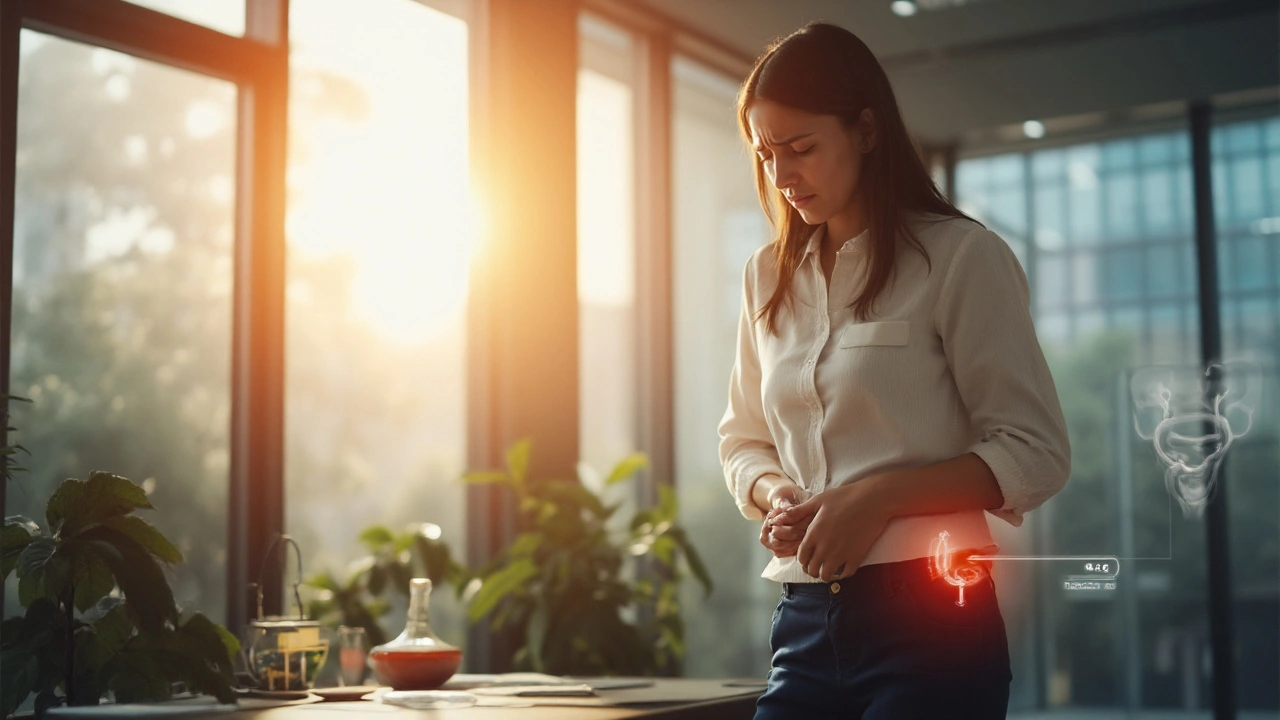Bladder Pain Treatment – What Works and Why
When dealing with bladder pain treatment, the goal is to ease discomfort, restore normal urination and prevent recurrence. Also known as bladder discomfort management, it blends diagnosis, medication, lifestyle changes and sometimes physical therapy to get relief faster.
One of the toughest sub‑conditions you’ll meet is interstitial cystitis, a chronic bladder inflammation that causes burning, urgency and pelvic pressure. It’s often called painful bladder syndrome, and it shapes how we approach bladder pain treatment because the pain isn’t sparked by bacteria but by a leaky bladder lining.
Another common trigger is a urinary tract infection, a bacterial invasion that inflames the urinary tract and can turn a mild ache into sharp, burning sensations. When a UTI is present, antibiotics become the first line, and that decision directly influences the overall treatment plan.
Key Approaches to Managing Bladder Pain
First, accurate diagnosis sets the stage. Doctors usually start with a urine test, then may order cystoscopy or imaging to rule out stones, tumors or interstitial cystitis. Knowing the root cause lets you pick the right tool – whether it’s an antibiotic, an anticholinergic pill or a pelvic floor regimen.
Medication is the most visible part of bladder pain treatment. Anticholinergics (like oxybutynin) calm an overactive bladder by blocking signals that trigger unwanted contractions. For interstitial cystitis, oral pentosan polysulfate aims to repair the bladder lining, while oral antihistamines can reduce inflammation. When a bacterial infection is caught early, a short course of trimethoprim‑sulfamethoxazole or nitrofurantoin clears the infection fast.
Physical therapy, especially pelvic floor training, often gets overlooked. Tight pelvic muscles can squeeze the bladder and amplify pain. A specialized therapist teaches relaxation, stretching and biofeedback exercises that gradually lower pressure. Studies show that incorporating pelvic floor therapy can cut pain scores by half for many patients.
Dietary tweaks matter, too. Acidic drinks, caffeine, alcohol and artificial sweeteners can irritate the bladder lining. Swapping soda for water, cutting coffee, and adding alkaline foods like bananas or sweet potatoes can calm flare‑ups. Some people also benefit from a low‑oxalate diet if kidney stones are part of the picture.
When meds and lifestyle aren’t enough, procedural options step in. Bladder instillations—where a soothing solution is poured directly into the bladder—help some interstitial cystitis sufferers. In severe cases, nerve modulation or even bladder augmentation surgery may be considered, but these are last‑resort choices after conservative methods have been exhausted.
Mind‑body techniques also play a role. Stress hormones tighten pelvic muscles and worsen urgency. Simple practices like deep breathing, guided meditation or yoga can lower cortisol levels and indirectly reduce bladder pain. Even a short daily walk improves circulation and helps the body flush out irritants.
Finally, follow‑up care is essential. Bladder pain often comes and goes, so tracking symptoms in a journal helps you spot patterns, adjust treatments, and communicate more clearly with your healthcare provider. Regular check‑ins ensure that any new infection or side‑effect catches attention early.
All these pieces—diagnosis, meds, physical therapy, diet, procedures, and self‑care—connect to form a comprehensive bladder pain treatment plan. The right mix depends on what’s causing the pain, how severe it is, and your personal preferences.
Below you’ll find a curated set of articles that dive deeper into each of these strategies, from the latest medication comparisons to practical tips for pelvic floor exercises. Use them as a roadmap to build a treatment plan that actually works for you.

Bladder Pain Explained: Causes, Symptoms & Treatment Options
Learn what causes bladder pain, how to recognise its symptoms, and explore effective treatments-from medication to lifestyle changes.
